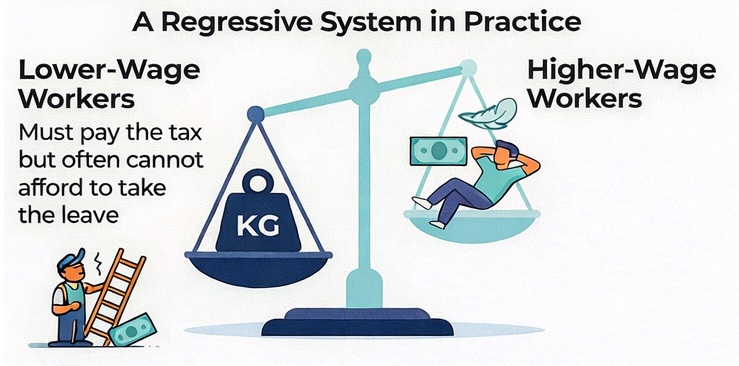With just one month before the U.S. Supreme Court hears oral arguments on Janus v. AFSCME, a case that could end the forced unionization of public employees, labor unions are sounding the alarms. They say a ruling in favor of the plaintiff, Mark Janus, would “strip Americans of our freedom to come together in strong unions, build power, and have a voice at work.”
Of course, none of that is true, but truth holds little sway for labor union bosses who are facing what they probably think is akin to the Apocalypse.
The truth is if the Court rules in favor of Mark Janus, a child care specialist from Illinois who argues his rights are violated by the mandatory union dues and fees he must pay in order to keep his job, workers in the public sector will simply have a choice. It’s a choice they currently don’t have—whether they want to pay a union to represent them. The right to unionize and to collectively bargain will remain firmly intact. The only thing Janus would prevent is the current practice whereby public workers are forced to pay for union representation they may not want. It takes an astonishing level of mental gymnastics to claim that giving workers a choice is counter to the ideals of worker rights, freedom and democracy.
Not every labor leader thinks giving workers a choice is a bad thing.
Ben Johnson, the former president of both the Vermont American Federation of Teachers and Vermont AFLC-CIO, says the collection of mandatory fees by unions is fundamentally anti-American:
“On its face, there is something screwy about the idea that an employer can take money from your paycheck against your will and give it to a private third party that you may want nothing to do with, and whose very existence you may oppose on philosophical, moral, financial, or strategic grounds. It feels patently unjust, not to mention un-American.”
In a three-part series that provides a unique perspective into the real world of labor unions, Johnson explains how he went from a union president who “spoke union words, thought union thoughts, and fought union fights” to espousing views that “represent complete apostasy—indeed, blasphemy—coming from a former union president.”
Johnson first makes the point that unions view the world through a lens that centers on a struggle for power—“who had it, who wanted it, and what people with power could do to those without.” That’s quite a different picture than the one painted by union bosses of a tireless fight to improve the lives America’s workers. Instead Johnson says unions have become “strong-arm hoods” who are “mugging” the workers they exist to serve.
Johnson also dispels the union-propagated myth of the free rider who covets the benefits of membership but doesn’t want to pay:
“I don’t remember meeting any free riders who refuse unionization just to save a buck. I have, however, talked to plenty of people who despised the union they were forced to support, who wanted nothing to do with it, or who sullenly put up with union hegemony because there was no real alternative, like the sad inhabitants of a totalitarian, one-party state. I’ve met plenty of these folks–disgusted, disappointed, whose rights have been infringed. But I haven’t met a single one of the mythical characters union lawyers talk about in court: that is those fantastic beasts who benefit from all the advantages union membership can confer but chuckle into their hands over the great deal they get without paying full price. I suspect these scary, amoral creatures exist mainly in pro-union fairy tales, told to scare labor law judges so they’ll uphold unions’ inalienable right to collect forced fees.”
He points out the irony that these forced fees have ultimately weakened the unions they’re supposed to strengthen. After decades of relying on this forcibly collected stream of revenue, unions’ ability to respond to and serve its members has become so atrophied they may no longer be able to survive without it.
As Johnson explains, “if your union is any good, it has nothing to worry about from Right-to-Work.”
Other labor bosses have echoed a similar sentiment. The President of Oklahoma AFL-CIO said in 2012 that since his state adopted a right-to-work law in 2001, his union has worked harder to keep members satisfied and has not noticed any significant decrease in membership:
“Somebody asked me how many workers got out because of right-to-work and I said, well, we don’t track that number…It’s like any other workforce, where 10% cause you 90% of your problems. Those are the ones that bailed out of paying dues.”
And in 2015, the executive director of the Washington Federation of State Employees (WFSE) urged union members to view the potential end of forced unionization “as an opportunity.” He said a U.S. Supreme Court ruling ending compulsory unionism would force labor to “internally organize in a way we never have before” to demonstrate to workers “the value and power” of unions:
“…we know first hand that when members see the power of the union in action solving their problems in the work place it moves people to remain members.”
Of course, the path of least resistance for unions is to keep resisting the push to restore workers’ rights by ending the forced collection of union dues and fees. And so they do, fighting what they characterize as a life or death battle to keep unions alive.
But as Johnson eloquently puts it:
“If the American labor movement can only survive on artificial life-support—which is to say, on forced dues and bargaining-unit contracts—then it’s already dead.”





